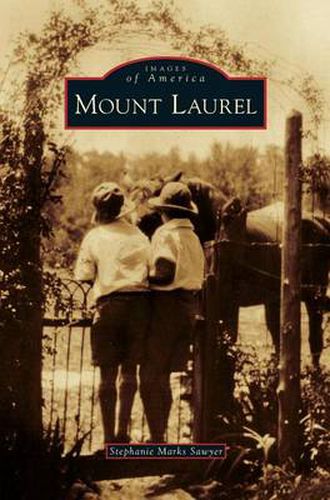Readings Newsletter
Become a Readings Member to make your shopping experience even easier.
Sign in or sign up for free!
You’re not far away from qualifying for FREE standard shipping within Australia
You’ve qualified for FREE standard shipping within Australia
The cart is loading…






This title is printed to order. This book may have been self-published. If so, we cannot guarantee the quality of the content. In the main most books will have gone through the editing process however some may not. We therefore suggest that you be aware of this before ordering this book. If in doubt check either the author or publisher’s details as we are unable to accept any returns unless they are faulty. Please contact us if you have any questions.
Settled in 1688 by the Evans family, Mount Laurel originally contained small hamlets like Hartford, Masonville, Fellowship, and Springville. During the 19th century, African Americans established the enclaves of Colemantown, Little Texas, and Petersburg, which served as stops along the Underground Railroad. An abolitionist named Dr. James Still, known as the black doctor of the pines, is buried in the Colemantown Cemetery. Situated east of the Delaware River in scenic Burlington County, Mount Laurel’s farmers regularly trucked their produce to the Campbell’s Soup Company and shipped their produce to market either by steamboat on the Rancocas Creek or by the Camden & Burlington County Railroad. Through photographs that illustrate the transformation of the area’s historical roadways into highways and the residential development of its long-standing farms and peach and apple orchards, Mount Laurel showcases the rich agricultural and cultural heritage of this Burlington County community.
$9.00 standard shipping within Australia
FREE standard shipping within Australia for orders over $100.00
Express & International shipping calculated at checkout
This title is printed to order. This book may have been self-published. If so, we cannot guarantee the quality of the content. In the main most books will have gone through the editing process however some may not. We therefore suggest that you be aware of this before ordering this book. If in doubt check either the author or publisher’s details as we are unable to accept any returns unless they are faulty. Please contact us if you have any questions.
Settled in 1688 by the Evans family, Mount Laurel originally contained small hamlets like Hartford, Masonville, Fellowship, and Springville. During the 19th century, African Americans established the enclaves of Colemantown, Little Texas, and Petersburg, which served as stops along the Underground Railroad. An abolitionist named Dr. James Still, known as the black doctor of the pines, is buried in the Colemantown Cemetery. Situated east of the Delaware River in scenic Burlington County, Mount Laurel’s farmers regularly trucked their produce to the Campbell’s Soup Company and shipped their produce to market either by steamboat on the Rancocas Creek or by the Camden & Burlington County Railroad. Through photographs that illustrate the transformation of the area’s historical roadways into highways and the residential development of its long-standing farms and peach and apple orchards, Mount Laurel showcases the rich agricultural and cultural heritage of this Burlington County community.